RBS 2011 Annual Report Download - page 323
Download and view the complete annual report
Please find page 323 of the 2011 RBS annual report below. You can navigate through the pages in the report by either clicking on the pages listed below, or by using the keyword search tool below to find specific information within the annual report.-
 1
1 -
 2
2 -
 3
3 -
 4
4 -
 5
5 -
 6
6 -
 7
7 -
 8
8 -
 9
9 -
 10
10 -
 11
11 -
 12
12 -
 13
13 -
 14
14 -
 15
15 -
 16
16 -
 17
17 -
 18
18 -
 19
19 -
 20
20 -
 21
21 -
 22
22 -
 23
23 -
 24
24 -
 25
25 -
 26
26 -
 27
27 -
 28
28 -
 29
29 -
 30
30 -
 31
31 -
 32
32 -
 33
33 -
 34
34 -
 35
35 -
 36
36 -
 37
37 -
 38
38 -
 39
39 -
 40
40 -
 41
41 -
 42
42 -
 43
43 -
 44
44 -
 45
45 -
 46
46 -
 47
47 -
 48
48 -
 49
49 -
 50
50 -
 51
51 -
 52
52 -
 53
53 -
 54
54 -
 55
55 -
 56
56 -
 57
57 -
 58
58 -
 59
59 -
 60
60 -
 61
61 -
 62
62 -
 63
63 -
 64
64 -
 65
65 -
 66
66 -
 67
67 -
 68
68 -
 69
69 -
 70
70 -
 71
71 -
 72
72 -
 73
73 -
 74
74 -
 75
75 -
 76
76 -
 77
77 -
 78
78 -
 79
79 -
 80
80 -
 81
81 -
 82
82 -
 83
83 -
 84
84 -
 85
85 -
 86
86 -
 87
87 -
 88
88 -
 89
89 -
 90
90 -
 91
91 -
 92
92 -
 93
93 -
 94
94 -
 95
95 -
 96
96 -
 97
97 -
 98
98 -
 99
99 -
 100
100 -
 101
101 -
 102
102 -
 103
103 -
 104
104 -
 105
105 -
 106
106 -
 107
107 -
 108
108 -
 109
109 -
 110
110 -
 111
111 -
 112
112 -
 113
113 -
 114
114 -
 115
115 -
 116
116 -
 117
117 -
 118
118 -
 119
119 -
 120
120 -
 121
121 -
 122
122 -
 123
123 -
 124
124 -
 125
125 -
 126
126 -
 127
127 -
 128
128 -
 129
129 -
 130
130 -
 131
131 -
 132
132 -
 133
133 -
 134
134 -
 135
135 -
 136
136 -
 137
137 -
 138
138 -
 139
139 -
 140
140 -
 141
141 -
 142
142 -
 143
143 -
 144
144 -
 145
145 -
 146
146 -
 147
147 -
 148
148 -
 149
149 -
 150
150 -
 151
151 -
 152
152 -
 153
153 -
 154
154 -
 155
155 -
 156
156 -
 157
157 -
 158
158 -
 159
159 -
 160
160 -
 161
161 -
 162
162 -
 163
163 -
 164
164 -
 165
165 -
 166
166 -
 167
167 -
 168
168 -
 169
169 -
 170
170 -
 171
171 -
 172
172 -
 173
173 -
 174
174 -
 175
175 -
 176
176 -
 177
177 -
 178
178 -
 179
179 -
 180
180 -
 181
181 -
 182
182 -
 183
183 -
 184
184 -
 185
185 -
 186
186 -
 187
187 -
 188
188 -
 189
189 -
 190
190 -
 191
191 -
 192
192 -
 193
193 -
 194
194 -
 195
195 -
 196
196 -
 197
197 -
 198
198 -
 199
199 -
 200
200 -
 201
201 -
 202
202 -
 203
203 -
 204
204 -
 205
205 -
 206
206 -
 207
207 -
 208
208 -
 209
209 -
 210
210 -
 211
211 -
 212
212 -
 213
213 -
 214
214 -
 215
215 -
 216
216 -
 217
217 -
 218
218 -
 219
219 -
 220
220 -
 221
221 -
 222
222 -
 223
223 -
 224
224 -
 225
225 -
 226
226 -
 227
227 -
 228
228 -
 229
229 -
 230
230 -
 231
231 -
 232
232 -
 233
233 -
 234
234 -
 235
235 -
 236
236 -
 237
237 -
 238
238 -
 239
239 -
 240
240 -
 241
241 -
 242
242 -
 243
243 -
 244
244 -
 245
245 -
 246
246 -
 247
247 -
 248
248 -
 249
249 -
 250
250 -
 251
251 -
 252
252 -
 253
253 -
 254
254 -
 255
255 -
 256
256 -
 257
257 -
 258
258 -
 259
259 -
 260
260 -
 261
261 -
 262
262 -
 263
263 -
 264
264 -
 265
265 -
 266
266 -
 267
267 -
 268
268 -
 269
269 -
 270
270 -
 271
271 -
 272
272 -
 273
273 -
 274
274 -
 275
275 -
 276
276 -
 277
277 -
 278
278 -
 279
279 -
 280
280 -
 281
281 -
 282
282 -
 283
283 -
 284
284 -
 285
285 -
 286
286 -
 287
287 -
 288
288 -
 289
289 -
 290
290 -
 291
291 -
 292
292 -
 293
293 -
 294
294 -
 295
295 -
 296
296 -
 297
297 -
 298
298 -
 299
299 -
 300
300 -
 301
301 -
 302
302 -
 303
303 -
 304
304 -
 305
305 -
 306
306 -
 307
307 -
 308
308 -
 309
309 -
 310
310 -
 311
311 -
 312
312 -
 313
313 -
 314
314 -
 315
315 -
 316
316 -
 317
317 -
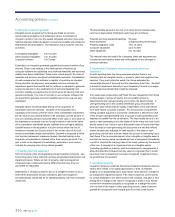 318
318 -
 319
319 -
 320
320 -
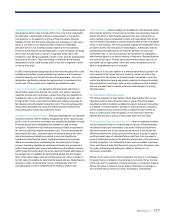 321
321 -
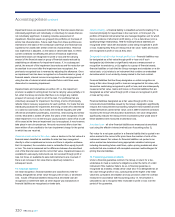 322
322 -
 323
323 -
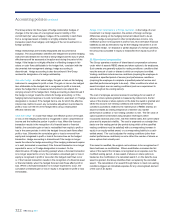 324
324 -
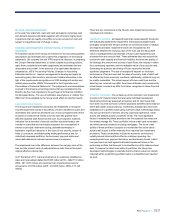 325
325 -
 326
326 -
 327
327 -
 328
328 -
 329
329 -
 330
330 -
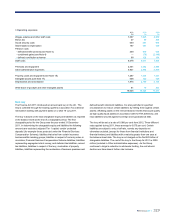 331
331 -
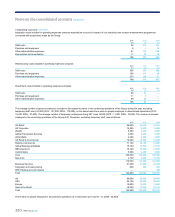 332
332 -
 333
333 -
 334
334 -
 335
335 -
 336
336 -
 337
337 -
 338
338 -
 339
339 -
 340
340 -
 341
341 -
 342
342 -
 343
343 -
 344
344 -
 345
345 -
 346
346 -
 347
347 -
 348
348 -
 349
349 -
 350
350 -
 351
351 -
 352
352 -
 353
353 -
 354
354 -
 355
355 -
 356
356 -
 357
357 -
 358
358 -
 359
359 -
 360
360 -
 361
361 -
 362
362 -
 363
363 -
 364
364 -
 365
365 -
 366
366 -
 367
367 -
 368
368 -
 369
369 -
 370
370 -
 371
371 -
 372
372 -
 373
373 -
 374
374 -
 375
375 -
 376
376 -
 377
377 -
 378
378 -
 379
379 -
 380
380 -
 381
381 -
 382
382 -
 383
383 -
 384
384 -
 385
385 -
 386
386 -
 387
387 -
 388
388 -
 389
389 -
 390
390 -
 391
391 -
 392
392 -
 393
393 -
 394
394 -
 395
395 -
 396
396 -
 397
397 -
 398
398 -
 399
399 -
 400
400 -
 401
401 -
 402
402 -
 403
403 -
 404
404 -
 405
405 -
 406
406 -
 407
407 -
 408
408 -
 409
409 -
 410
410 -
 411
411 -
 412
412 -
 413
413 -
 414
414 -
 415
415 -
 416
416 -
 417
417 -
 418
418 -
 419
419 -
 420
420 -
 421
421 -
 422
422 -
 423
423 -
 424
424 -
 425
425 -
 426
426 -
 427
427 -
 428
428 -
 429
429 -
 430
430 -
 431
431 -
 432
432 -
 433
433 -
 434
434 -
 435
435 -
 436
436 -
 437
437 -
 438
438 -
 439
439 -
 440
440 -
 441
441 -
 442
442 -
 443
443 -
 444
444 -
 445
445 -
 446
446 -
 447
447 -
 448
448 -
 449
449 -
 450
450 -
 451
451 -
 452
452 -
 453
453 -
 454
454 -
 455
455 -
 456
456 -
 457
457 -
 458
458 -
 459
459 -
 460
460 -
 461
461 -
 462
462 -
 463
463 -
 464
464 -
 465
465 -
 466
466 -
 467
467 -
 468
468 -
 469
469 -
 470
470 -
 471
471 -
 472
472 -
 473
473 -
 474
474 -
 475
475 -
 476
476 -
 477
477 -
 478
478 -
 479
479 -
 480
480 -
 481
481 -
 482
482 -
 483
483 -
 484
484 -
 485
485 -
 486
486 -
 487
487 -
 488
488 -
 489
489 -
 490
490
 |
 |

RBS Group 2011 321
19. Loan commitments
Provision is made for loan commitments, other than those classified as
held-for-trading, if it is probable that the facility will be drawn and the
resulting loan will be recognised at a value less than the cash advanced.
Syndicated loan commitments in excess of the level of lending under the
commitment approved for retention by the Group are classified as held-
for-trading and measured at fair value.
20. Derecognition
Afinancial asset is derecognised when the contractual right to receive
cash flows from the asset has expired or when it has been transferred
and the transfer qualifies for derecognition. A transfer requires that the
Group either (a) transfers the contractual rights to receive the asset's
cash flows; or (b) retains the right to the asset's cash flows but assumes
acontractual obligation to pay those cash flows to a third party. After a
transfer, the Group assesses the extent to which it has retained the risks
and rewards of ownership of the transferred asset. The asset remains on
the balance sheet if substantially all the risks and rewards have been
retained. It is derecognised if substantially all the risks and rewards have
been transferred. If substantially all the risks and rewards have been
neither retained nor transferred, the Group assesses whether or not it has
retained control of the asset. If it has not retained control, the asset is
derecognised. Where the Group has retained control of the asset, it
continues to recognise the asset to the extent of its continuing
involvement.
Afinancial liability is removed from the balance sheet when the obligation
is discharged, or cancelled, or expires. On the redemption or settlement
of debt securities (including subordinated liabilities) issued by the Group,
the Group derecognises the debt instrument and records a gain or loss
being the difference between the debt's carrying amount and the cost of
redemption or settlement. The same treatment applies where the debt is
exchanged for a new debt issue that has terms substantially different
from those of the existing debt. The assessment of whether the terms of
the new debt instrument are substantially different takes into account
qualitative and quantitative characteristics including a comparison of the
present value of the cash flows under the new terms with present value of
the remaining cash flows of the original debt issue discounted at the
effective interest rate of the original debt issue.
21. Sale and repurchase transactions
Securities subject to a sale and repurchase agreement under which
substantially all the risks and rewards of ownership are retained by the
Group continue to be shown on the balance sheet and the sale proceeds
recorded as a financial liability. Securities acquired in a reverse sale and
repurchase transaction under which the Group is not exposed to
substantially all the risks and rewards of ownership are not recognised on
the balance sheet and the consideration paid is recorded as a financial
asset.
Securities borrowing and lending transactions are usually secured by
cash or securities advanced by the borrower. Borrowed securities are not
recognised on the balance sheet or lent securities derecognised. Cash
collateral given or received is treated as a loan or deposit; collateral in the
form of securities is not recognised. However, where securities borrowed
are transferred to third parties, a liability for the obligation to return the
securities to the stock lending counterparty is recorded.
22. Netting
Financial assets and financial liabilities are offset and the net amount
presented in the balance sheet when, and only when, the Group currently
has a legally enforceable right to set off the recognised amounts and it
intends either to settle on a net basis or to realise the asset and settle the
liability simultaneously. The Group is party to a number of arrangements,
including master netting agreements, that give it the right to offset
financial assets and financial liabilities but where it does not intend to
settle the amounts net or simultaneously and therefore the assets and
liabilities concerned are presented gross.
23. Capital instruments
The Group classifies a financial instrument that it issues as a liability if it
is a contractual obligation to deliver cash or another financial asset, or to
exchange financial assets or financial liabilities on potentially
unfavourable terms and as equity if it evidences a residual interest in the
assets of the Group after the deduction of liabilities. The components of a
compound financial instrument issued by the Group are classified and
accounted for separately as financial assets, financial liabilities or equity
as appropriate.
Incremental costs that are directly attributable to an equity transaction are
deducted from equity net of any related tax.
The consideration for any ordinary shares of the company purchased by
the Group (treasury shares) is deducted from equity. On the cancellation
of treasury shares their nominal value is removed from equity and any
excess of consideration over nominal value is treated in accordance with
the capital maintenance provisions of the Companies Act. On the sale or
reissue of treasury shares the consideration received is credited to
equity, net of any directly attributable incremental costs and related tax.
24. Derivatives and hedging
Derivative financial instruments are initially recognised, and subsequently
measured, at fair value. Derivative fair values are determined from
quoted prices in active markets where available. Where there is no active
market for an instrument, fair value is derived from prices for the
derivative's components using appropriate pricing or valuation models.
Aderivative embedded in a contract is accounted for as a stand-alone
derivative if its economic characteristics are not closely related to the
economic characteristics of the host contract; unless the entire contract is
measured at fair value with changes in fair value recognised in profit or
loss.
Gains and losses arising from changes in the fair value of derivatives that
are not the hedging instrument in a qualifying hedge are recognised as
they arise in profit or loss. Gains and losses are recorded in Income
from trading activities except for gains and losses on those derivatives
that are managed together with financial instruments designated at fair
value; these gains and losses are included in Other operating income.
